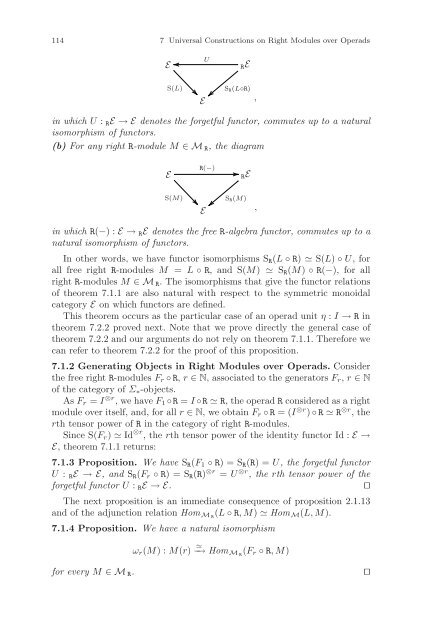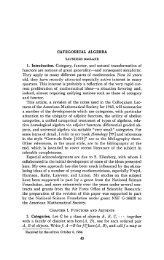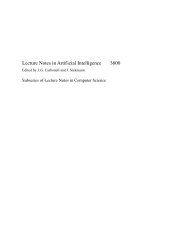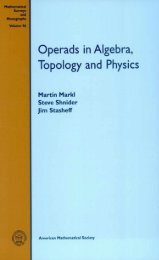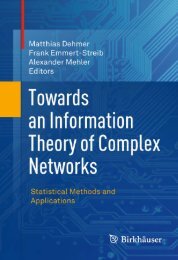Symmetric Monoidal Categories for Operads - Index of
Symmetric Monoidal Categories for Operads - Index of
Symmetric Monoidal Categories for Operads - Index of
Create successful ePaper yourself
Turn your PDF publications into a flip-book with our unique Google optimized e-Paper software.
114 7 Universal Constructions on Right Modules over <strong>Operads</strong><br />
E<br />
S(L)<br />
E<br />
U<br />
RE<br />
SR(L◦R)<br />
in which U : RE →Edenotes the <strong>for</strong>getful functor, commutes up to a natural<br />
isomorphism <strong>of</strong> functors.<br />
(b) For any right R-module M ∈MR, the diagram<br />
E<br />
S(M)<br />
R(−)<br />
E<br />
RE<br />
SR(M)<br />
in which R(−) :E→ RE denotes the free R-algebra functor, commutes up to a<br />
natural isomorphism <strong>of</strong> functors.<br />
In other words, we have functor isomorphisms SR(L ◦ R) � S(L) ◦ U, <strong>for</strong><br />
all free right R-modules M = L ◦ R, and S(M) � SR(M) ◦ R(−), <strong>for</strong> all<br />
right R-modules M ∈MR. The isomorphisms that give the functor relations<br />
<strong>of</strong> theorem 7.1.1 are also natural with respect to the symmetric monoidal<br />
category E on which functors are defined.<br />
This theorem occurs as the particular case <strong>of</strong> an operad unit η : I → R in<br />
theorem 7.2.2 proved next. Note that we prove directly the general case <strong>of</strong><br />
theorem 7.2.2 and our arguments do not rely on theorem 7.1.1. There<strong>for</strong>e we<br />
can refer to theorem 7.2.2 <strong>for</strong> the pro<strong>of</strong> <strong>of</strong> this proposition.<br />
7.1.2 Generating Objects in Right Modules over <strong>Operads</strong>. Consider<br />
thefreerightR-modules Fr ◦ R, r ∈ N, associated to the generators Fr, r ∈ N<br />
<strong>of</strong> the category <strong>of</strong> Σ∗-objects.<br />
As Fr = I⊗r ,wehaveF1◦R = I ◦R � R, the operad R considered as a right<br />
module over itself, and, <strong>for</strong> all r ∈ N, weobtainFr◦R =(I⊗r ) ◦ R � R⊗r ,the<br />
rth tensor power <strong>of</strong> R in the category <strong>of</strong> right R-modules.<br />
Since S(Fr) � Id ⊗r ,therth tensor power <strong>of</strong> the identity functor Id : E→<br />
E, theorem 7.1.1 returns:<br />
7.1.3 Proposition. We have SR(F1 ◦ R) =SR(R) =U, the <strong>for</strong>getful functor<br />
U : RE →E,andSR(Fr◦R) =SR(R) ⊗r = U ⊗r ,therth tensor power <strong>of</strong> the<br />
<strong>for</strong>getful functor U : RE →E. ⊓⊔<br />
The next proposition is an immediate consequence <strong>of</strong> proposition 2.1.13<br />
and <strong>of</strong> the adjunction relation HomM R(L ◦ R,M) � HomM(L, M).<br />
7.1.4 Proposition. We have a natural isomorphism<br />
ωr(M) :M(r) � −→ HomM R (Fr ◦ R,M)<br />
<strong>for</strong> every M ∈MR. ⊓⊔<br />
,<br />
,


